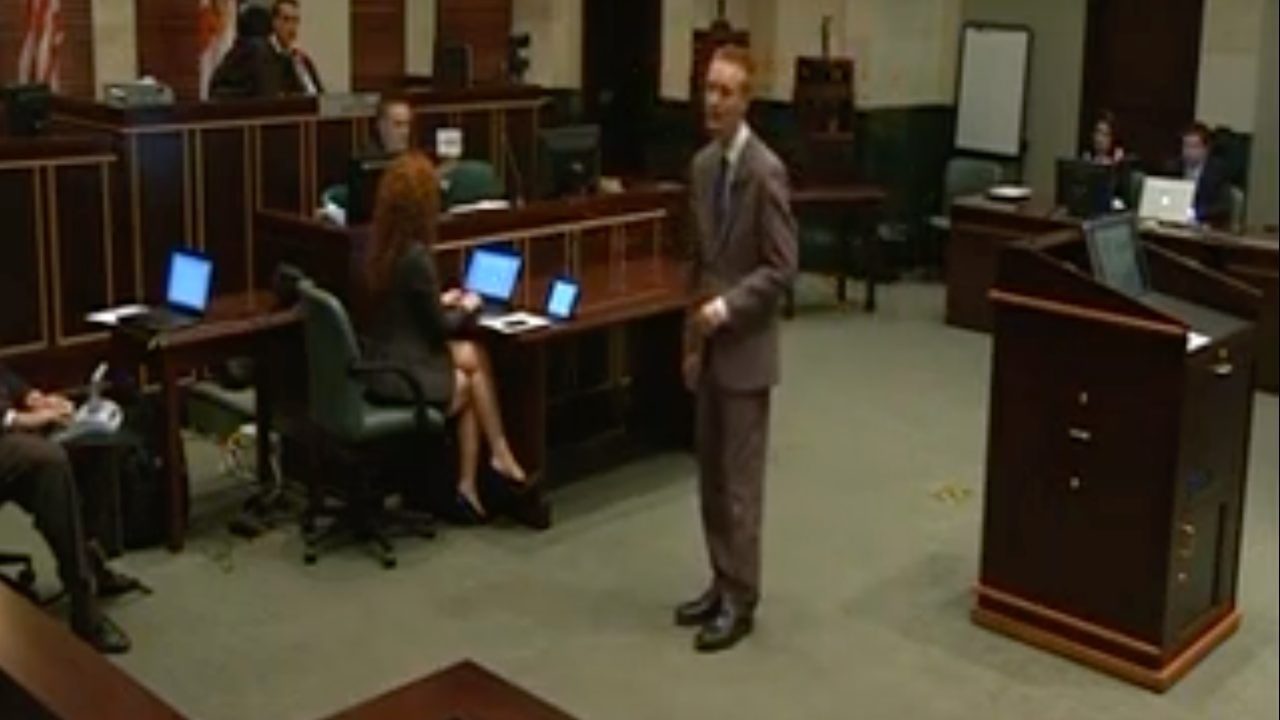How to Structure a Great Mock Trial Closing Argument
Nov 16, 2022
It’s estimated that only roughly 1% of all civil cases and 2% of federal criminal cases ever go to trial. That’s why most lawyers don’t have extensive trial experience. Some professional attorneys can go their whole careers without trying cases before juries. Many high school mock trial competitors feel lost when they write a closing argument.
We spoke to Dr. Iain Lampert. He won two AMTA (American Mock Trial Association) national championships, co-coached law school national champions, and has served on AMTA’s case writing and tournament development subcommittees. He has the following advice for budding lawyers.
First, remind the judge of your theme. Your theme is a catchy reminder of your core theory of the case. For example, UC Irvine used the theme “when they sent her alone, they sent her to die” in a negligence case about a scuba diving company that may have abandoned their customer. If you don’t have a clear theme in your opening statement that resonates throughout your direct and cross examinations and returns in your closing argument, you need to think of one.
Second, provide the judge with an attention-getting anecdote. An easy option is to give an unexpected analogy. For example, famed trial attorney Gerry Spence incorporates an analogy about a locked door into his famous mock trial about Lee Harvey Oswald. He compares being asked about what’s behind a locked door to the government withholding information and asking the defense to guess what it is. If you don’t have an analogy, you can link one memorable moment from the trial to your theory. For example, in a case where the defendant was on the run from the police, you could compare a very evasive defendant who tried to avoid responsibility during cross examination to how he behaved during the crime. This is a preferable strategy to repeating your narrative from opening statement. By this time, the judge knows what’s going on and wants to hear the information characterized in a more unique, persuasive way.
Third, link the anecdote back to your side’s key case theory and theme. You should take a sentence or two to do this.
Fourth, explain the charges and the burden of proof to the judges. If your side has the burden, you need to make it seem easy to meet. For example, if you have the burden to prove your case beyond a reasonable doubt, be clear that the only reasonable scenario proves the defendant’s guilt; reasonable doubt isn’t possible doubt. Use language like “the judge will instruct you” in jury trials or “as your honor knows” in bench trials.
Fifth, prove the judges with a roadmap of your remaining arguments. In general, you should split your arguments into two or three major sections. This year, the California mock trial case has three different charges, so it makes logical sense to show how you proved all three charges. If there’s only one charge, focusing on two or three simple facts (each of which can connect to an essential element of the case) will make things easy to understand. If you have a ‘fact structure’ instead of a ‘charges structure,’ the structure of the closing should mirror that of the opening. Then, you can say “as you heard at the start of this trial, this case is about 2-3 simple facts.” You’ll be rewarded for structure and consistency.
Sixth, go through your two or three major arguments. Make reference to the evidence that came out during the trial. In general, you should hammer home facts that we heard about at least twice in the proceedings. Judges are often bored or distracted. Something that was barely discussed by a single witness will make them question their memory instead of nod in agreement. The most important word you can use in this section is “because.” If you’re not making arguments here, it’ll feel like an opening. We need to know what we heard and why it matters. Creative rhetoric and useful one-liners will be scored favorably.
Seventh, discuss the other side’s case. This is a chance to show your spontaneity. If you can flip their theme, do it. For example, a defense flip of the scuba diving theme could be “they didn’t send her alone; she swam away alone”. If they had two or three simple facts, take them on head-on, disproving them one by one in a structured way. Judges reward students who seem like they’re going off script.
Eighth, end with a repetition of your theme and a clear call to action. For example, argue that holding a drunk-driving defendant accountable will send a message to others and ask the jury to find the defendant guilty.
If you follow this structure (theme, attention-getter, link/theme, burden/charges, roadmap, arguments, theme/call to action), you’ll be praised for your structure.
As you can observe from watching the final round comments from any major mock trial championship, many judges are more concerned with delivery (tone, memorization, movement, confidence) than content. Monotonously reading a well-scripted argument is often less effective than confidently improvising a responsive one. Make sure to memorize. If you fail to prepare, you should prepare to fail. And if you do everything you can to prepare and still don't get favorable ballots, remember that there are no losses, only lessons.
Happy mocking!
ModernBrain is going on Thanksgiving break. There will be no classes from November 21, 2022 to November 27, 2022. Our first early bird discount ends on November 26. Register here.


